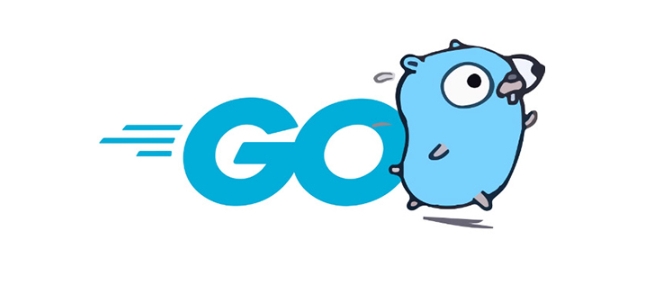Using the -race detector can effectively detect race conditions; write test triggering problems for overwriting concurrent scenarios; combine static analysis tools to assist troubleshooting; and reasonably choose locking or channel control synchronization. Specifically, 1. Run go test -race or go run -race main.go to enable competitive detection; 2. Write test code for multiple goroutines to concurrently modify shared resources; 3. Use go vet, IDE plug-in, golangci-lint and other tools to analyze potential risks; 4. Use sync.Mutex locking or channel to control access order, and ensure that all paths are processed synchronously to prevent deadlocks and performance problems; 5. Include race detection into daily development and CI processes to continuously ensure concurrency security.

When writing concurrent programs, Go's goroutine and channel mechanisms are easy to use, but you can easily get into the trap of race conditions if you are not careful. This kind of problem is often not easy to detect in the test environment and is exposed after it is launched, which is also a headache to check. So the key is how to detect and prevent it in advance.

Below are some commonly used methods and techniques in actual work to help you block race condition before publishing.
Use -race detector
Go comes with a very practical competitive detection tool, which is to add the -race parameter when running a program or test.

For example, running a single test:
go test -race
Or run the program directly:

go run -race main.go
It will monitor memory access during operation. Once it is found that two goroutines read and write the same variable at the same time and there is no synchronization mechanism protection, a race error will be reported.
Note: Turning on
-racewill significantly affect performance, so it is recommended to use it during the test phase and not for use in production environments.
Write tests to cover concurrent scenarios
Relying on -race alone is not enough, it must be combined with test codes that can trigger concurrent conflicts.
You can start multiple goroutines in the test and operate on shared resources at the same time. for example:
func TestRaceCondition(t *testing.T) {
var wg sync.WaitGroup
var counter int
for i := 0; i < 100; i {
wg.Add(1)
go func() {
defer wg.Done()
counter
}()
}
wg.Wait()
} There is obviously a race condition in this code. If you run this test with -race , you should see the warning message.
So the key points of writing this type of test are:
- Start multiple goroutines
- Modify the same piece of data
- No locking or channel control order
This will make it easier to trigger potential problems.
Use tools to assist in analysis
In addition to -race , some static analysis tools can also be used to help locate possible problem sources.
for example:
-
go vetcan check for some common error patterns:
go vet
- IDE plug-ins, such as VS Code's Go plug-in, can also prompt potential data competition risks when encoding.
- Third-party tools such as golangci-lint integrate multiple inspectors and can also be configured to enable race-related rules.
These tools cannot be completely replaced by -race , but can be used as a supplement to find problems during the development stage.
Locking or using channel? Don't let choices leave hidden dangers
There are two common practices for handling concurrent access in Go: locking (such as sync.Mutex ), or controlling the access order through the channel.
For example, you can change the above counter self-increase example to this:
var mu sync.Mutex
var counter int
func increment() {
mu.Lock()
defer mu.Unlock()
counter
}Or use channel to control access:
ch := make(chan struct{}, 1)
func increment() {
ch <- struct{}{}
counter
<-ch
}Race can be avoided in both ways, but you need to pay attention to:
- When adding locks, make sure that all access paths are locked correctly.
- If the channel is not used properly, it may lead to deadlock or performance bottlenecks.
So the key is to access the entrance uniformly and control the synchronization logic, rather than just adding a lock or sending a message to be done.
Basically that's it. Detection of race conditions is not a one-time task, but something that must be paid attention to in daily development, testing, and CI processes. Although there are not many methods, as long as you insist on using -race and supporting tests, most problems can be discovered in advance.
The above is the detailed content of How to detect race conditions in Go. For more information, please follow other related articles on the PHP Chinese website!

Hot AI Tools

Undress AI Tool
Undress images for free

Undresser.AI Undress
AI-powered app for creating realistic nude photos

AI Clothes Remover
Online AI tool for removing clothes from photos.

Clothoff.io
AI clothes remover

Video Face Swap
Swap faces in any video effortlessly with our completely free AI face swap tool!

Hot Article

Hot Tools

Notepad++7.3.1
Easy-to-use and free code editor

SublimeText3 Chinese version
Chinese version, very easy to use

Zend Studio 13.0.1
Powerful PHP integrated development environment

Dreamweaver CS6
Visual web development tools

SublimeText3 Mac version
God-level code editing software (SublimeText3)
 What is the standard project layout for a Go application?
Aug 02, 2025 pm 02:31 PM
What is the standard project layout for a Go application?
Aug 02, 2025 pm 02:31 PM
The answer is: Go applications do not have a mandatory project layout, but the community generally adopts a standard structure to improve maintainability and scalability. 1.cmd/ stores the program entrance, each subdirectory corresponds to an executable file, such as cmd/myapp/main.go; 2.internal/ stores private code, cannot be imported by external modules, and is used to encapsulate business logic and services; 3.pkg/ stores publicly reusable libraries for importing other projects; 4.api/ optionally stores OpenAPI, Protobuf and other API definition files; 5.config/, scripts/, and web/ store configuration files, scripts and web resources respectively; 6. The root directory contains go.mod and go.sum
 How do you read a file line by line in Go?
Aug 02, 2025 am 05:17 AM
How do you read a file line by line in Go?
Aug 02, 2025 am 05:17 AM
Using bufio.Scanner is the most common and efficient method in Go to read files line by line, and is suitable for handling scenarios such as large files, log parsing or configuration files. 1. Open the file using os.Open and make sure to close the file via deferfile.Close(). 2. Create a scanner instance through bufio.NewScanner. 3. Call scanner.Scan() in the for loop to read line by line until false is returned to indicate that the end of the file is reached or an error occurs. 4. Use scanner.Text() to get the current line content (excluding newline characters). 5. Check scanner.Err() after the loop is over to catch possible read errors. This method has memory effect
 How do you handle routing in a Go web application?
Aug 02, 2025 am 06:49 AM
How do you handle routing in a Go web application?
Aug 02, 2025 am 06:49 AM
Routing in Go applications depends on project complexity. 1. The standard library net/httpServeMux is suitable for simple applications, without external dependencies and is lightweight, but does not support URL parameters and advanced matching; 2. Third-party routers such as Chi provide middleware, path parameters and nested routing, which is suitable for modular design; 3. Gin has excellent performance, built-in JSON processing and rich functions, which is suitable for APIs and microservices. It should be selected based on whether flexibility, performance or functional integration is required. Small projects use standard libraries, medium and large projects recommend Chi or Gin, and finally achieve smooth expansion from simple to complex.
 How do you parse command-line flags in Go?
Aug 02, 2025 pm 04:24 PM
How do you parse command-line flags in Go?
Aug 02, 2025 pm 04:24 PM
Go's flag package can easily parse command line parameters. 1. Use flag.Type() to define type flags such as strings, integers, and booleans; 2. You can parse flags to variables through flag.TypeVar() to avoid pointer operations; 3. After calling flag.Parse(), use flag.Args() to obtain subsequent positional parameters; 4. Implementing the flag.Value interface can support custom types to meet most simple CLI requirements. Complex scenarios can be replaced by spf13/cobra library.
 How do you use conditional statements like if-else in Go?
Aug 02, 2025 pm 03:16 PM
How do you use conditional statements like if-else in Go?
Aug 02, 2025 pm 03:16 PM
The if-else statement in Go does not require brackets but must use curly braces. It supports initializing variables in if to limit scope. The conditions can be judged through the elseif chain, which is often used for error checking. The combination of variable declaration and conditions can improve the simplicity and security of the code.
 How do you declare constants in Go?
Aug 02, 2025 pm 04:21 PM
How do you declare constants in Go?
Aug 02, 2025 pm 04:21 PM
In Go, constants are declared using the const keyword, and the value cannot be changed, and can be of no type or type; 1. A single constant declaration such as constPi=3.14159; 2. Multiple constant declarations in the block are such as const(Pi=3.14159; Language="Go"; IsCool=true); 3. Explicit type constants such as constSecondsInMinuteint=60; 4. Use iota to generate enumeration values, such as const(Sunday=iota;Monday;Tuesday) will assign values 0, 1, and 2 in sequence, and iota can be used for expressions such as bit operations; constants must determine the value at compile time,
 What does the go run command do?
Aug 03, 2025 am 03:49 AM
What does the go run command do?
Aug 03, 2025 am 03:49 AM
gorun is a command for quickly compiling and executing Go programs. 1. It completes compilation and running in one step, generates temporary executable files and deletes them after the program is finished; 2. It is suitable for independent programs containing main functions, which are easy to develop and test; 3. It supports multi-file operation, and can be executed through gorun*.go or lists all files; 4. It automatically processes dependencies and uses the module system to parse external packages; 5. It is not suitable for libraries or packages, and does not generate persistent binary files. Therefore, it is suitable for rapid testing during scripts, learning and frequent modifications. It is an efficient and concise way of running.
 How to connect to a SQL database in Go?
Aug 03, 2025 am 09:31 AM
How to connect to a SQL database in Go?
Aug 03, 2025 am 09:31 AM
To connect to SQL databases in Go, you need to use the database/sql package and a specific database driver. 1. Import database/sql packages and drivers (such as github.com/go-sql-driver/mysql), note that underscores before the drivers indicate that they are only used for initialization; 2. Use sql.Open("mysql","user:password@tcp(localhost:3306)/dbname") to create a database handle, and call db.Ping() to verify the connection; 3. Use db.Query() to execute query, and db.Exec() to execute






